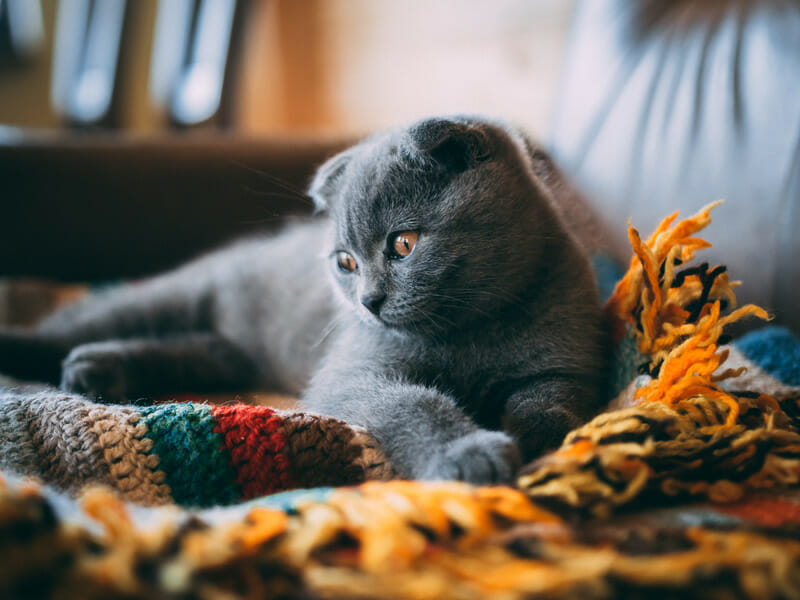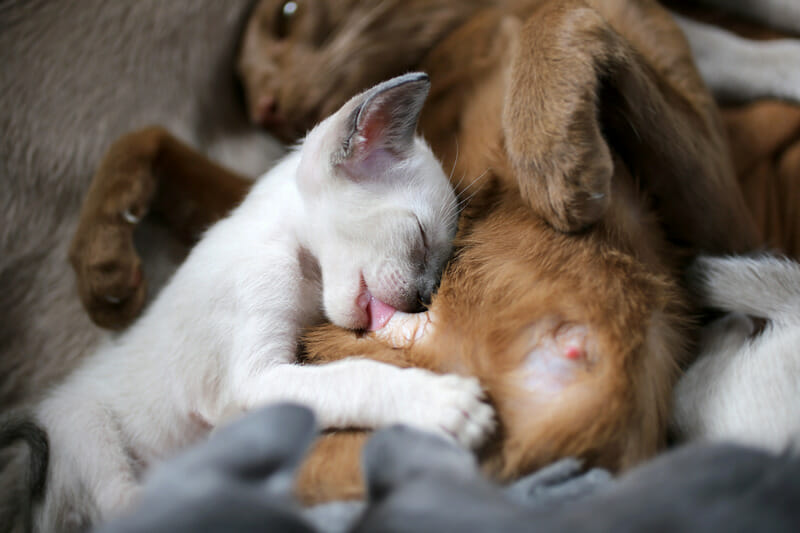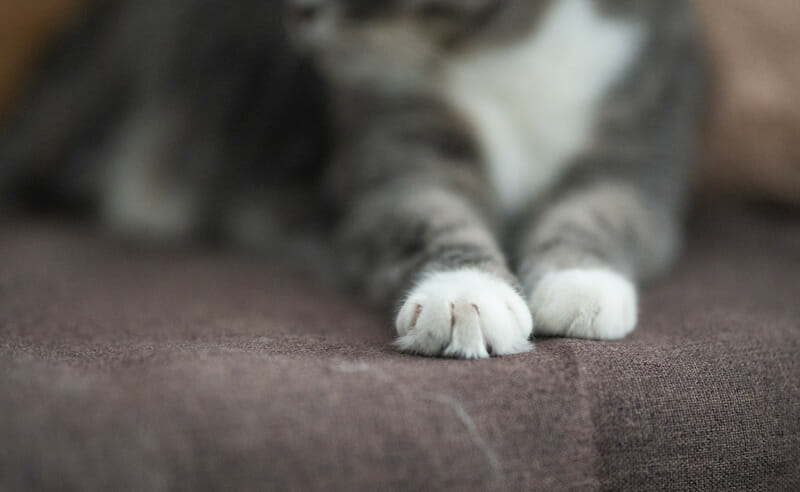Cats are beautiful creatures with unusual habits. If you’re adopting one for the very first time, it’s best to read up on as much cat behaviour as possible so you don’t get blindsided by their eccentricities. Kneading is one of those peculiar cat behaviours, and in this Waldo’s Friends article, we answer the questions:
What is kneading?
Kneading is defined by Live Science as “a common behaviour seen in domestic cats, in which the feline pushes in and out with its front paws, alternating between left and right.” It is not necessarily done by all cats, but it is something that can be done by young kittens and full-grown felines. Because of the repeated rhythmic motion, kneading is also referred to as making biscuits or kneading dough. Kneading is different from scratching and usually involves cats selecting soft, pliant surfaces to massage such as pillows, blankets, and even their owners or other animals.

Why do cats knead?
There are many theories as to why cats knead. Some of the most popular theories are:
1 Instinctively copy their ancestors
Long before cats became household pets, their predecessors lived in the wild. These animals had to flatten grass or foliage to create temporary places to rest or give birth. These days, your cat doesn’t need to trample on anything to make a cosy spot, but the kneading action can help her unwind and “turn down” her area before sleeping.
2 Replicate nursing
As mammals, kittens nurse from their mothers. They had to knead their mother’s breast tissue to stimulate and release milk. Since kneading as kittens produced favourable results, some scientists have theorised that grown-up cats continue to knead because of the positive and comforting association with nursing.

3 Communicate their affection
Kneading is sometimes accompanied by purring, which cats are also known to do as newborns. The repetitive action may be a way for your cat to reciprocate her love for you as you pet her.
4 Stretch muscles
Cats love to stretch after a period of sitting still or napping. Stretching, which includes kneading, can help a cat activate her muscles, improve her blood circulation, and increase her alertness.
5 Look for possible mates
Kneading is also a sign that female cats are open to mating. Aside from kneading the air, they could stretch or purr while lying on their side.
6 Mark their territory
Known for being territorial creatures, cats mark their territory by releasing their scent found between their paw pads. Kneading on soft blankets, worn-out teddy bears, and even on you lets other animals know what’s rightfully theirs.

How do I deal if my cat likes to knead me?
Many cats express their affection by sitting on their owner’s lap and kneading their legs. Some even accompany the movement with suckling on their human’s fingers or ear. If the cat owns a sharp set of claws or doesn’t know how to control herself, she may end up hurting her pawrent.
If this sounds like a regular scenario with your cat, make sure to trim her nails regularly or consider placing caps on her nails. To protect yourself, you can also place a thick but soft cloth barrier before letting the cat sit on your lap.
Discover more cat-related guides and adoption stories from Waldo’s Friends.
Leave a comment
Your email address will not be published. All fields are required.